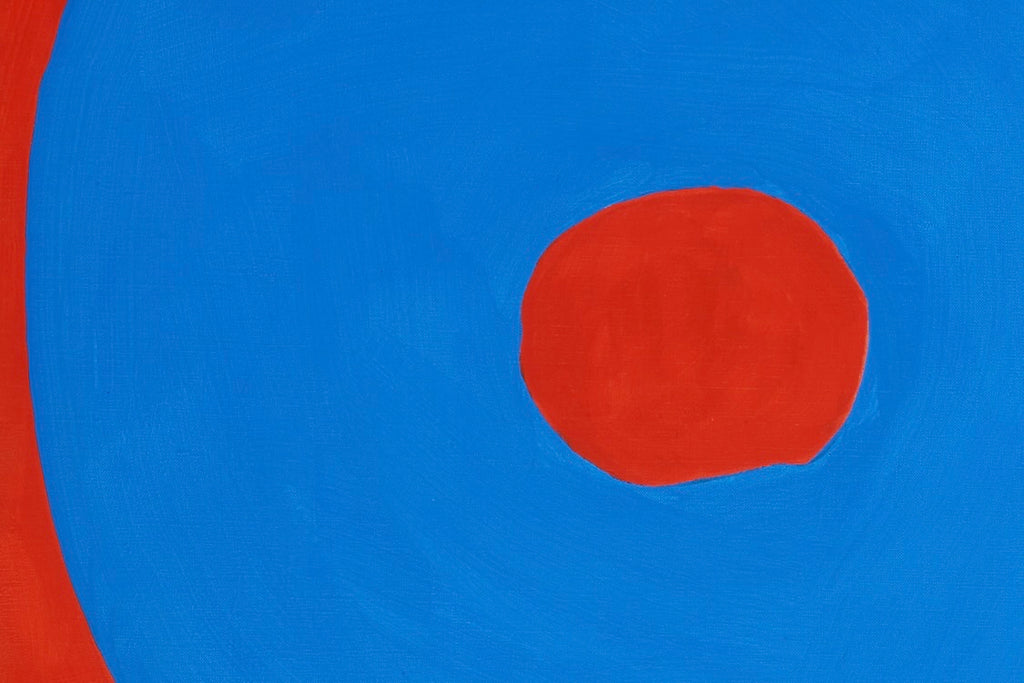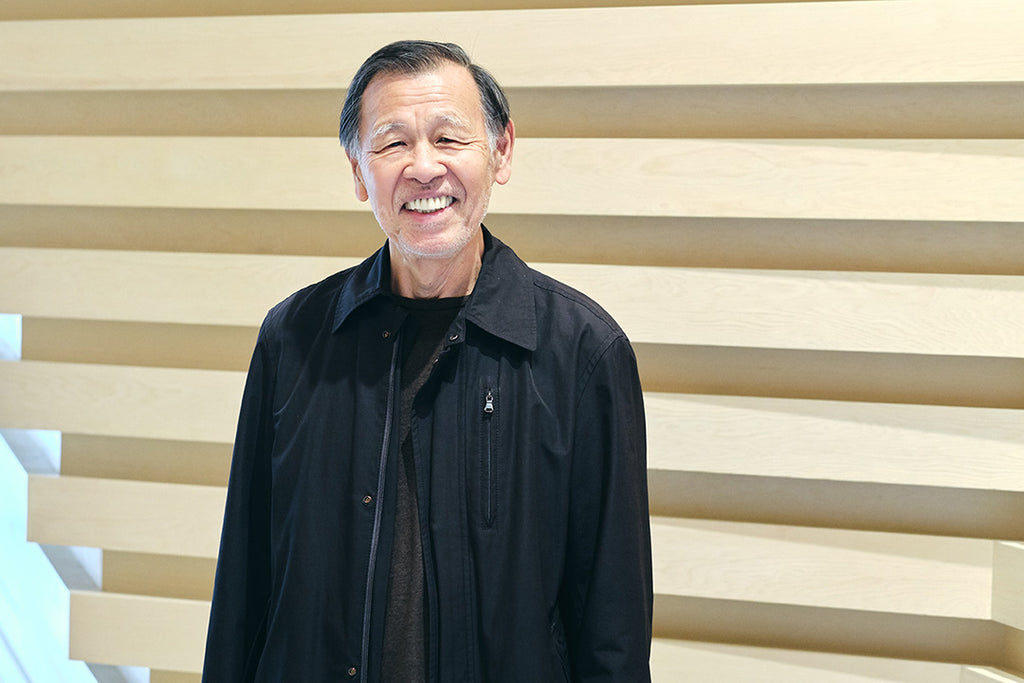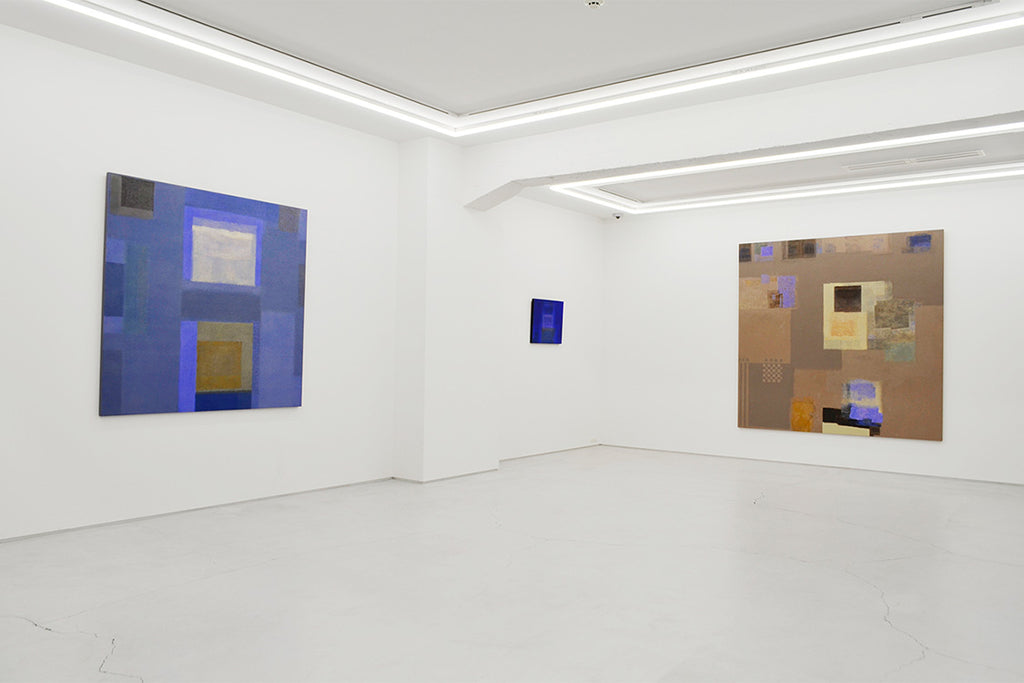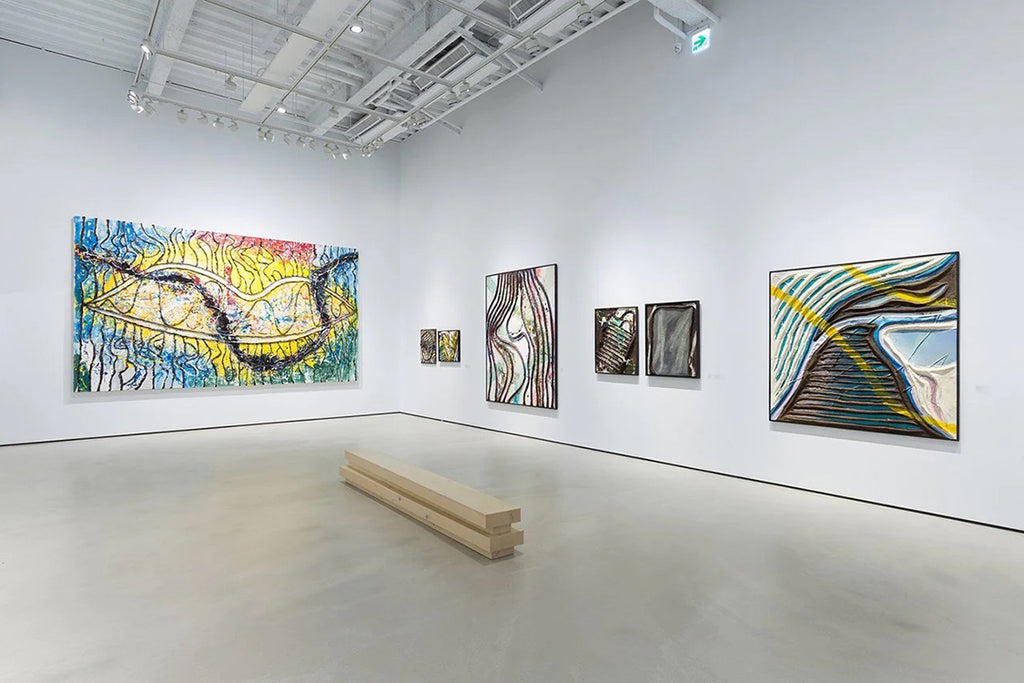ARTICLES
The Connection between Nature and Humans as the Starting Point: Yuxing Huang
A New Appreciation Contemporary Japanese and Asian Art
18/23

“HUANG YUXING: Kingdom of Gold” Whitestone Gallery Taipei, 2018
In our ongoing series, we present the digital archive of the book 'A New Appreciation Contemporary Japanese and Asian Art' This book delves into internationally acclaimed artists and the dynamics of the Asian art market. The eighteenth installment features artist Yuxing Huang and art critic Kunio Motoe.
The Connection between Nature and Humans as the Starting Point|Interviews of Experts in the Art Industry
Yuxing Huang
Artist
Kunio Motoe
Professor Emeritus, Tama Art University, Art Critic
Yuxing Huang is a Beijing-based budding painter. He debuted soon after graduating from the renowned Central Academy of Fine Arts, and is now internationally active. His work is characterized by its color and composition that leave strong impressions on the viewers. The work reflects the Western and Eastern views of nature and his unique interpretation of life, which delivers its intense energy. Motoe visited his first solo exhibition in Japan.

From left: Kunio Motoe, Yuxing Huang
Struggling with a lack of understanding during his youth
Motoe: Nice to meet you. I saw your work in this gallery for the first time. I heard that this is your first exhibition in Japan. The sensitive and delicate impression struck me first. The composition is very contemporary, and I felt like I was seeing a new painting by Peter Doig1.
Although this is my personal impression, I also find the feeling and spirituality similar to that of Japanese contemporary artists. Furthermore, a certain sense of life and death can also be found in your painting. Where are they coming from? I would like to learn from you. To begin with, could you tell me about your background before becoming an artist?
Huang: I was born in 1975 in Beijing. My father was working at a science research center operated by the government and my mother was working at a computer-related facility. Thus, I grew up in a family that had no link to art. I think I was introverted. Ever since I was in preschool, I preferred drawing alone than playing with other kids. I even appealed to my mother that I wanted to quit preschool.
Motoe: Do you think the one-child policy had an influence?
Huang: I actually have a sister who is six years older. At that time, a family could have two children if the conditions were met.
Motoe: 1975 is more than forty years ago. China has accomplished drastic economic growth since then, and Beijing has probably changed a lot, too.
Huang: The old town scenery cannot be found anywhere now. It is like another world, since everything including the buildings has changed. I feel very sad.
Motoe: Did you have good grades in art class?
Huang: I put all my energy into painting throughout elementary and junior high school, but my art teachers always told me that my paintings were not good. Since then, I had a sense that I was creating unique paintings, but my parents never expected me to go down the path of art. They brought my landscape paintings to experts without telling me, but it was severely criticized once more. I heard about it much later.
Motoe: When did you decide to go down the path of becoming a painter?
Huang: When I was a junior high school student. However, I was told by my school teacher that I have no talent in painting. Furthermore, China then was based on family genealogy, and thus, people said, “Unless your father is a well known painter, it is impossible to become a successful artist.” It goes without saying that none of the teachers understood contemporary art.
Motoe: Under such circumstances, it seems very unusual for you to manage to enter the Central Academy of Fine Arts, the most prestigious art university in China.
Huang: It was not easy. Like other countries, entering art school in China requires training to depict objects by repeatedly drawing plaster figures realistically. For someone like me who wanted to create paintings based on my imagination, it was nothing other than pain.
Motoe: Did you go to preparatory school?
Huang: I went to technical school to study the basics of art. It was my mother’s recommendation, but the classes to learn techniques to enter art school were very painful.
Motoe: Did you study hard at the technical school?
Huang: No. Again, I did not listen to the teachers, which made them angry. I came to hate it after being told “You have no talent” in front of other students and skipped classes by lying to my mother. Of course, because of this, it did not go well in the beginning.
I promised to go to a regular school if I failed to enter art school, but I skipped the exam by pretending I was sick…I was so depressed for a while but, after all, art was the only thing that interested me. So, I returned to the technical school and studied hard to be at the top of the class. I then entered the Central Academy of Fine Arts after entering a craft school.

《The Lake of Barking Infants》2019, 40.0×30.0cm, Acrylic on panel and canvas
Pursuing the View of Nature and Life Unique to the East
Motoe: What did you do after graduating?
Huang: I had no job and no income for a while. Since my parents worked at government institutions, they tried to find me a proper job. They recommended me to work in the army and introduced me to office work at museums. But I did not want to do any of those.
Motoe: You were very stubborn (laugh).
Huang: Yes. But my parents finally changed their mind and told me to go to France if I really want to be a famous painter. So, I studied French for one year, but could not get a visa and failed to study in France.
Motoe: You could not find a way to live as a painter. What did you do after that?
Huang: I did not go through the galleries. Instead, I borrowed money and participated in an art fair as an individual to show my art. It was 2002. I remember bringing my works to the art fair site, which took three hours from Beijing by train. Since it was at my own expense, I was relieved when the works were sold.
Motoe: Did it result in immediate responses?
Huang: Tang Contemporary Art Center in Bangkok and Soka Art Center in Beijing who saw my works at the art fair invited me to have a solo show in 2003. These became my first solo exhibitions.
Motoe: I see. Things moved fast after the first art fair. Since then, you have done solo and group shows in Shanghai, Taiwan, France, and the Netherlands. Your works are auctioned at Christie’s, and the first solo exhibition in Japan was realized. By the way, what concept do you put in the works displayed in this exhibition?
Huang: I was most conscious of how to express Eastern cultures. There are series on rivers and forests as well as series that depict minerals in my work. All of these are connected under the theme of the “link between nature and humans.”
Motoe: I see. That might be the similarity with Japanese contemporary artists. Do you think there is a difference in how nature is viewed in the East and West?
Huang: Western cultures place humans on top of nature. Human beings are the master of nature. On the other hand, in Eastern cultures, humans serve for nature. It is a big difference, and I have continued creating my art with exceptional care for this view of nature that is unique to the East.

《The Collector Who Hugs a Sculpture》2018, 40.0×30.0cm, Acrylic on panel and canvas
Expressing Things that Are Not Opposing Each Other, but Circulating within the Same Ring
Motoe: That is very interesting. I would like to ask a little more about the work. What is the process of art making? Do you have a firm concept before you begin drawing?
Huang: No. I start sketching without thinking. When I start working on canvas, I have a rough sense of direction, but the concept becomes more explicit as I add colors and depict details. As for the title, I like to select one that does not limit, but instead expands the viewer’s imagination.
Motoe: I see. You develop your work as you paint. When I see your exhibition today, I strongly felt the image of “death.”
However, the painting is composed of various colors like neon, which made me wonder why I felt death from your work.
Huang: Death is often attached to black or dark colors, but I like to express death using bright colors. I want to deliver the dual nature of things—good and evil, life and death, peace and war, nature and humans, etc.—through my art. What appears to be opposite does not exist separately but is connected to one another. They exist within the same ring and are circulating, and it is my theme to express that in my art.
Motoe: I see. Using bright colors to depict death originated from that philosophy. I am glad I was able to learn a lot from you, like the Eastern view of humans serving nature and the bilateral character of apparently opposing things. I wish you further success in Japan. Thank you very much.
Huang: Thank you very much. I hope to see you again in the future.
Book Information
Title: A New Appreciation Contemporary Japanese and Asian Art (English Edition)
Publisher : Whitestone Co., Ltd.
Release Date : February 26, 2020
*Information in this article is at the time of publication.
1Peter Doig was born in 1958 in Scotland and spent his childhood in Trinidad and Tobago and Canada before studying art in London. He is known as a painter of New Figurative Painting that started after the 1990s following the line of New Painting. In 1993, Doig won first prize at the John Moore exhibition and was nominated for the 1994 Turner Prize.
ARTIST
RELATED ARTICLES
-

Life in New York as an Artist: Harmony of Art, People, and Space
A New Appreciation Contemporary Japanese and Asian Art
23/23 -

Discovering the Essence of Art: Renowned American Artist, Tadaaki Kuwayama
A New Appreciation Contemporary Japanese and Asian Art
22/23 -

Painting that Does Not Resemble to Anyone Else’s Expression that Reaches the Deepest Layer of the Heart
A New Appreciation Contemporary Japanese and Asian Art
21/23 -

Being Gutai Is All About Myself
A New Appreciation Contemporary Japanese and Asian Art
20/23



